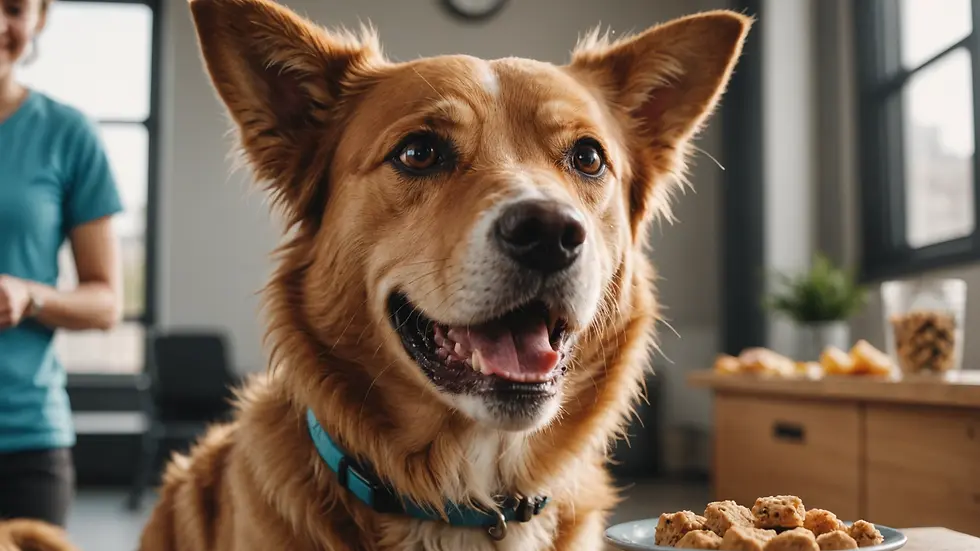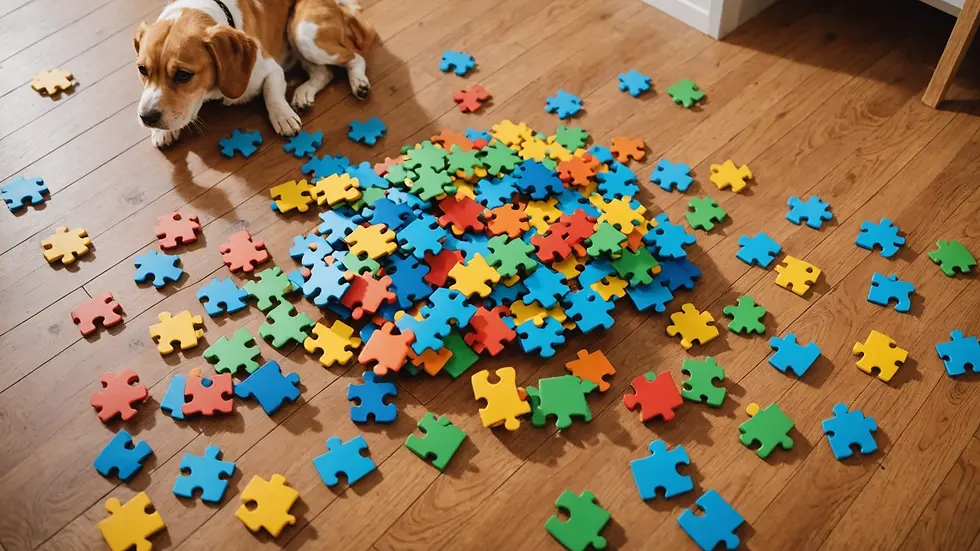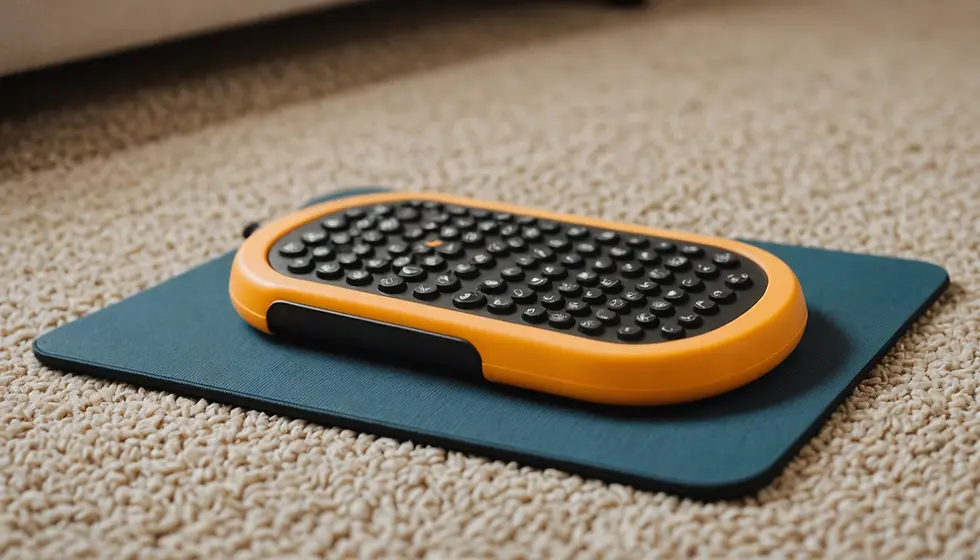The Hidden Techniques of Positive Dog Training: Uncovering Effective Methods
- stevenscanine
- Mar 8
- 6 min read
Positive dog training is reshaping how we connect with our canine friends. This approach focuses on reward-based methods that can strengthen the bond between you and your dog while making the learning process enjoyable for both. In this blog post, we will explore specific techniques that define positive dog training and provide practical methods that can lead to joyful training experiences.
Understanding Positive Dog Training Reinforcement
Positive reinforcement is the foundation of effective dog training. It means rewarding good behaviors to promote their repetition. Rewards can include treats, praise, or playtime, and it's essential to choose rewards that your dog values.
For example, some dogs may be motivated by small, tasty treats like chicken or cheese, while others might respond better to a favorite toy or simple affection. Knowing what excites your dog can boost the effectiveness of your training sessions.
Timing is key in this method. Rewards should be given immediately after your dog displays the desired behavior to help them connect the action with the reward. For instance, if your dog sits on command, give them a treat the moment they lower their bottom to the ground. This immediate reinforcement increases the likelihood they will sit again.
Unlike traditional training methods that often rely on corrections, positive reinforcement promotes a supportive atmosphere conducive to learning.
Clicker Training: A Specific Skill Set
Clicker training is an effective tool in the framework of positive dog training. This technique uses a small handheld device that makes a distinct clicking sound. The click acts as an immediate marker, emphasizing the exact moment your dog displays the desired behavior.
To get started, condition your dog to the sound of the clicker by clicking it and providing a treat right after. For instance, you might click when they successfully perform a "sit." Over time, your dog will learn to associate the click with a reward, creating a powerful communication tool.
Clicker training is especially effective for teaching complex behaviors or tricks. For example, if you want your dog to roll over, break this move into smaller parts—click and reward them for each successful attempt, such as lying down, rolling to one side, and eventually completing the roll.
The Role of Positive Reinforcement Schedules
Once you understand positive reinforcement, applying reinforcement schedules can optimize your training process. These schedules guide how often a behavior should be rewarded.
Three common reinforcement schedules include:
Continuous Reinforcement: Reward every instance of a desired behavior when starting to teach a new command. For instance, if you are training your dog to shake hands, reward them every time they do it correctly.
Fixed Ratio Schedule: Reward after a specific number of behaviors. For example, give a treat after every fifth "sit." This increases the likelihood of your dog repeating the behavior.
Variable Ratio Schedule: This involves rewarding after an unpredictable number of behaviors. For example, sometimes reward your dog after the second time they fetch a ball, and other times after the sixth. This unpredictability can be very motivating for dogs.
Mixing these schedules keeps training sessions engaging and helps maintain your dog’s interest over time.
Socialization: A Vital Aspect
Socialization is crucial in positive dog training. It helps your dog become comfortable in diverse settings, reducing their chances of developing fear-based reactions in adulthood.
Begin socialization early, exposing your puppy to various environments, friendly pets, and different people. For example, allow your puppy to interact with a calm adult dog while rewarding them for relaxed behavior. Positive reinforcement during these encounters fosters confidence and adaptability.
As your dog grows, continue socializing them without forcing interactions. If your dog seems scared of unfamiliar noises, reward them for observing calmly and gradually exposing them to the sound. This validates their feelings and promotes positive associations.
Using Lure and Reward Techniques
Luring is another effective training technique. This method involves using a treat or toy to encourage your dog to perform specific behaviors.
For instance, if teaching "sit," hold a treat near their nose and gently raise it above their head. As they lift their head to follow the treat, their bottom will naturally lower to the ground. Reward them immediately for sitting.
This technique can also be utilized for more advanced commands like "stay." By using a treat to guide your dog into the initial position, you can effectively communicate your expectations.
The Importance of Consistency
Consistency is vital in dog training. Dogs thrive on clear commands and routines. Ensure all family members use the same commands and rewards to prevent confusion.
Inconsistent cues can send mixed signals, making it hard for your dog to grasp what's expected. Establish a clear set of commands and stick to them every time you train.
Additionally, maintaining a regular training schedule is crucial. Short, frequent sessions—ideally around 5-10 minutes—are often more productive than longer, irregular ones, as they keep your dog engaged without overwhelming them.
The Art of Management: Preventing Mistakes
Effective dog training involves more than creating new behaviors; it requires managing your dog's environment to prevent unwanted actions.
For example, if your dog tends to bark at the mail carrier, create a space away from the front door during deliveries. Gradually introduce them to the noise outside with positive reinforcement, rewarding calm behavior.
Another technique is to keep tempting items like shoes or trash out of your dog’s reach. This not only helps avoid unwanted chewing but prevents habits from forming in the first place. Setting your dog up for success will lead to a more positive training experience.
The Power of Enrichment
Including mental and physical enrichment in your dog's routine enhances the training process. Activities like puzzle toys and scent games not only engage their minds but can reduce anxiety and curb destructive behaviors.
Physical exercise is equally crucial. Engaging in activities like agility courses or obedience classes helps channel your dog's energy productively while solidifying our training lessons. According to the Association of Professional Dog Trainers, dogs that engage in regular enrichment activities show improvement in overall behavior and emotional stability.
Bridging the Gap: Using Handler Body Language
Dogs are highly sensitive to body language. Your stance, posture, and movements can greatly affect their responses during training.
Be mindful of your own body language to encourage effective communication. For instance, turning your body slightly away from your dog can signal them to come, while standing tall can imply you wish for them to remain in place.
A calm and positive demeanor fosters a sense of safety, helping your dog focus on the task at hand.
Incorporating Play into Training
Play can transform dog training into a fun experience. Blending play with training keeps your dog excited and reinforces learning.
For example, after your dog successfully completes a command, reward them with a quick game of fetch or tug-of-war. This interactivity not only boosts motivation but strengthens your emotional bond.
When training feels like play, your dog will be more inclined to participate enthusiastically.
When Challenges Arise: Patience and Gradual Progress
Training challenges are common, and patience is crucial. Each dog learns at their own pace, and it is important not to lose heart. Focus on gradual improvement and celebrate small achievements.
If behavioral problems arise, returning to the basics may be necessary. For example, if your dog struggles with "leave it," practicing the command in a low-distraction environment can help refresh their memory. Remaining positive and creative in your approach will lead to successful training.
Regular practice, realistic expectations, and compassion will cultivate a supportive learning space for your dog, encouraging growth over time.
Building a Strong Bond Through Training
Positive dog training techniques foster strong, constructive relationships between dogs and their owners. By applying methods like positive reinforcement, clicker training, and socialization, dog owners can create a solid foundation for lifelong learning.
Every dog is unique, and recognizing their individual motivations will enhance your training efforts. Patience, consistency, and commitment are key to building a bond of trust and respect.
Embarking on this training journey will not only develop your dog's skills but will also enrich the connection you share. A well-trained dog is enjoyable, confident, and happier in their daily life. Happy training!









Comments